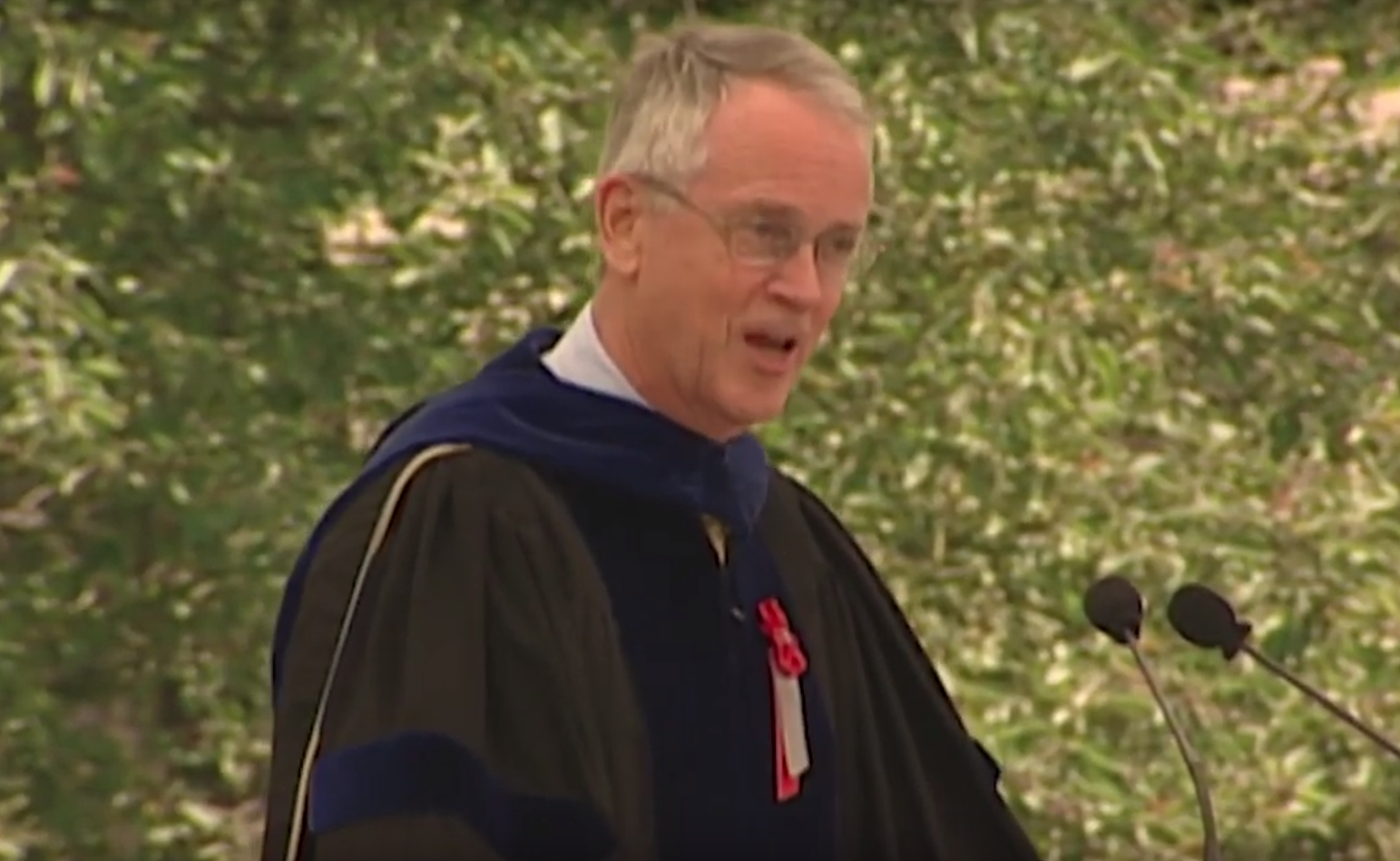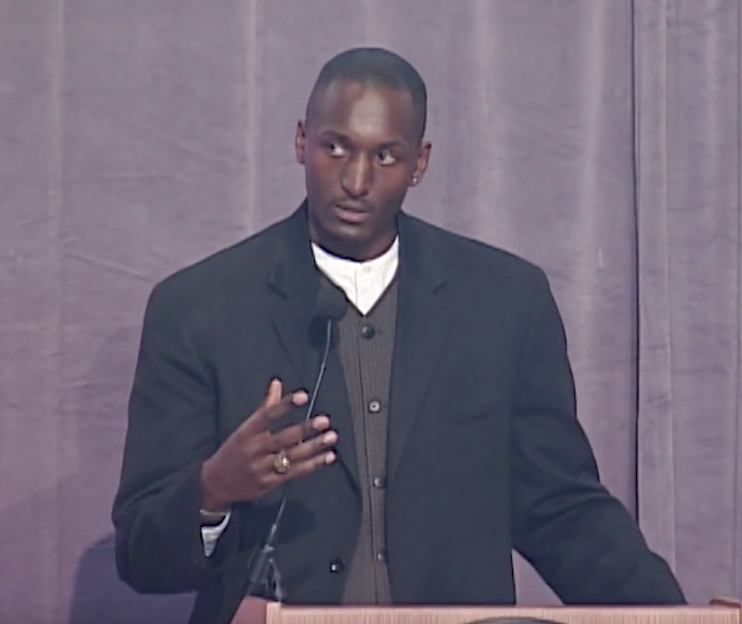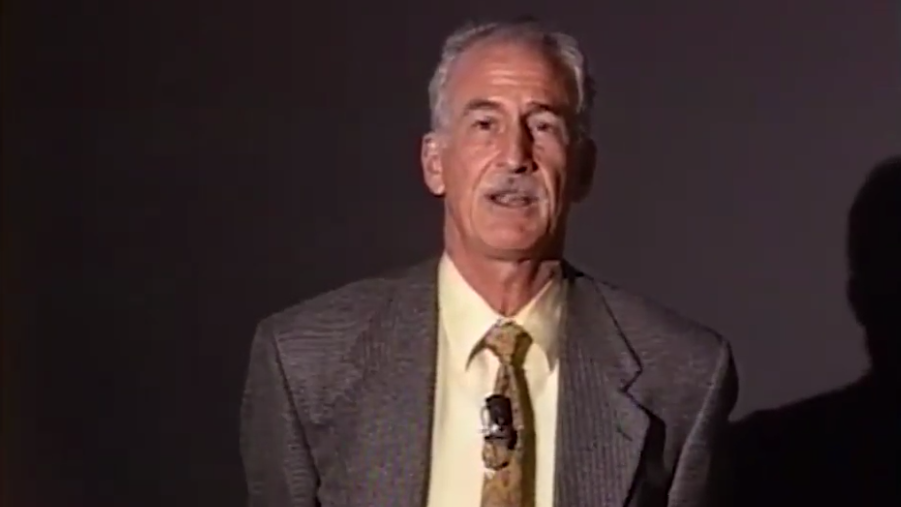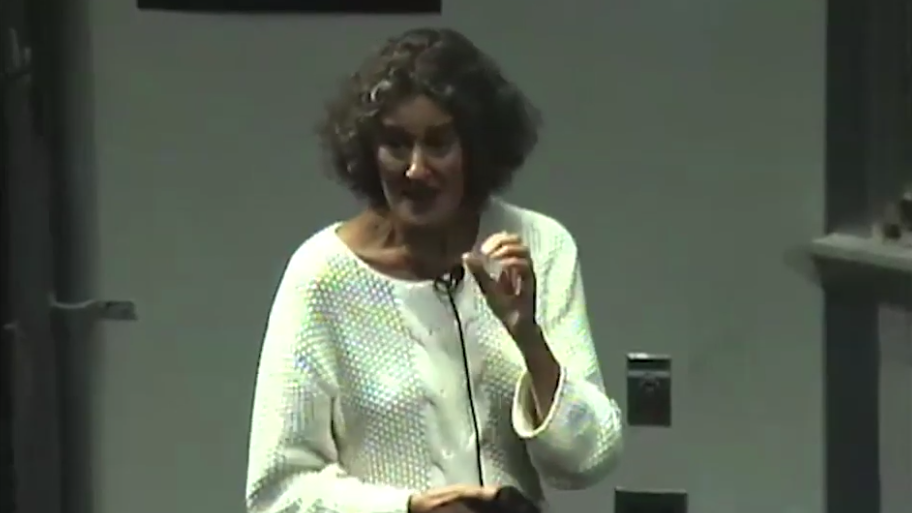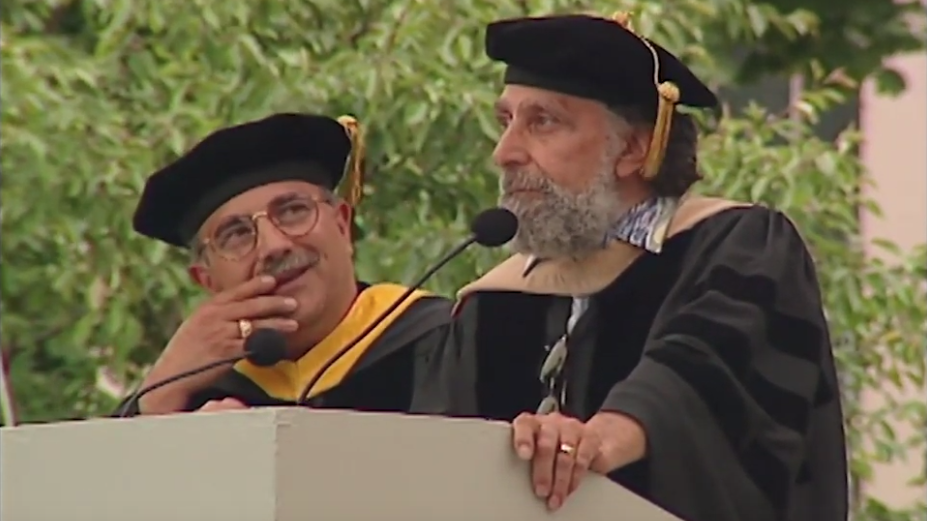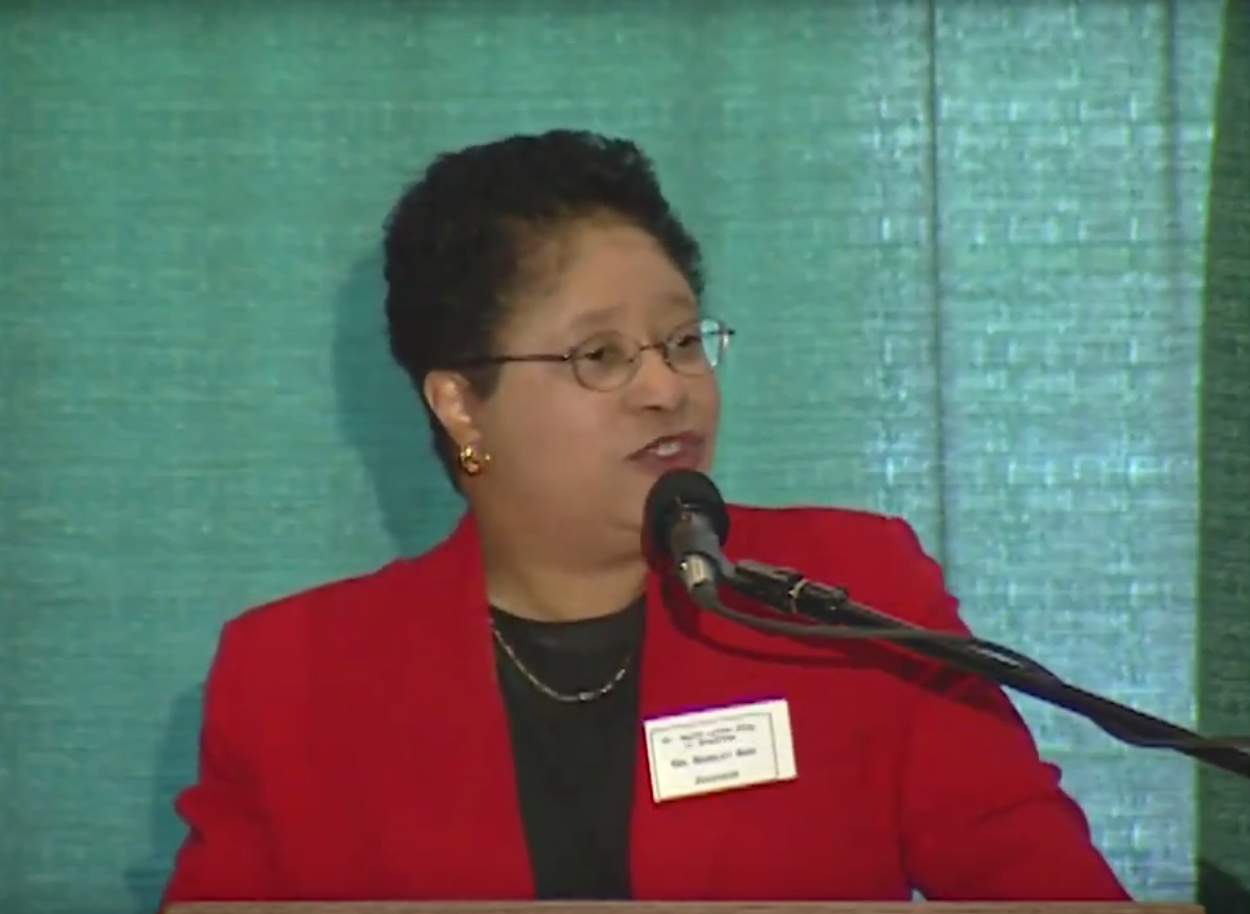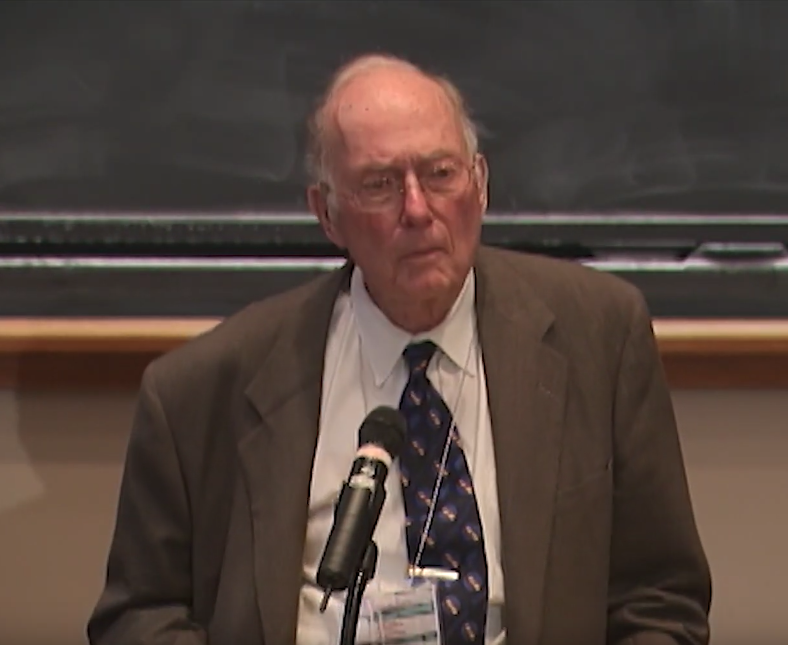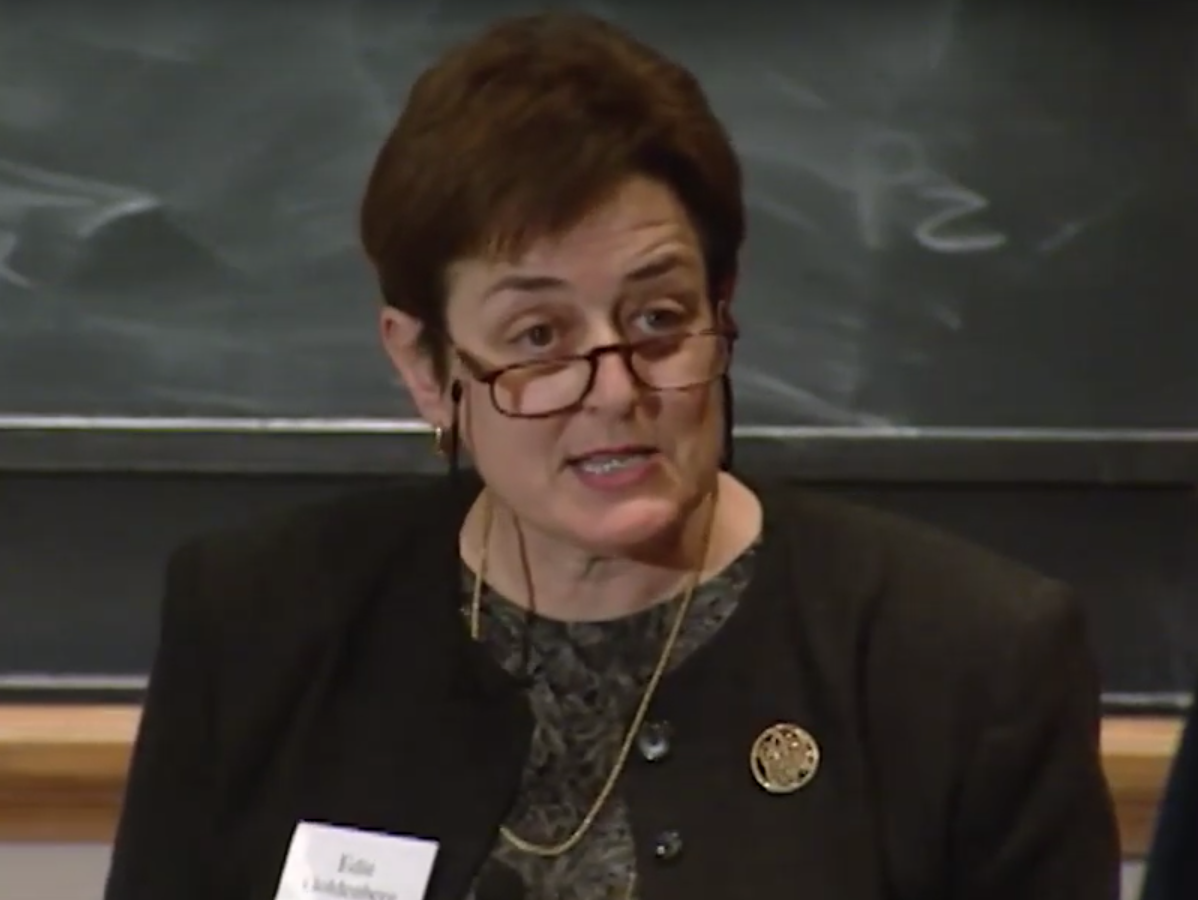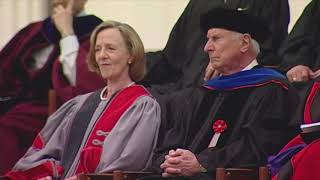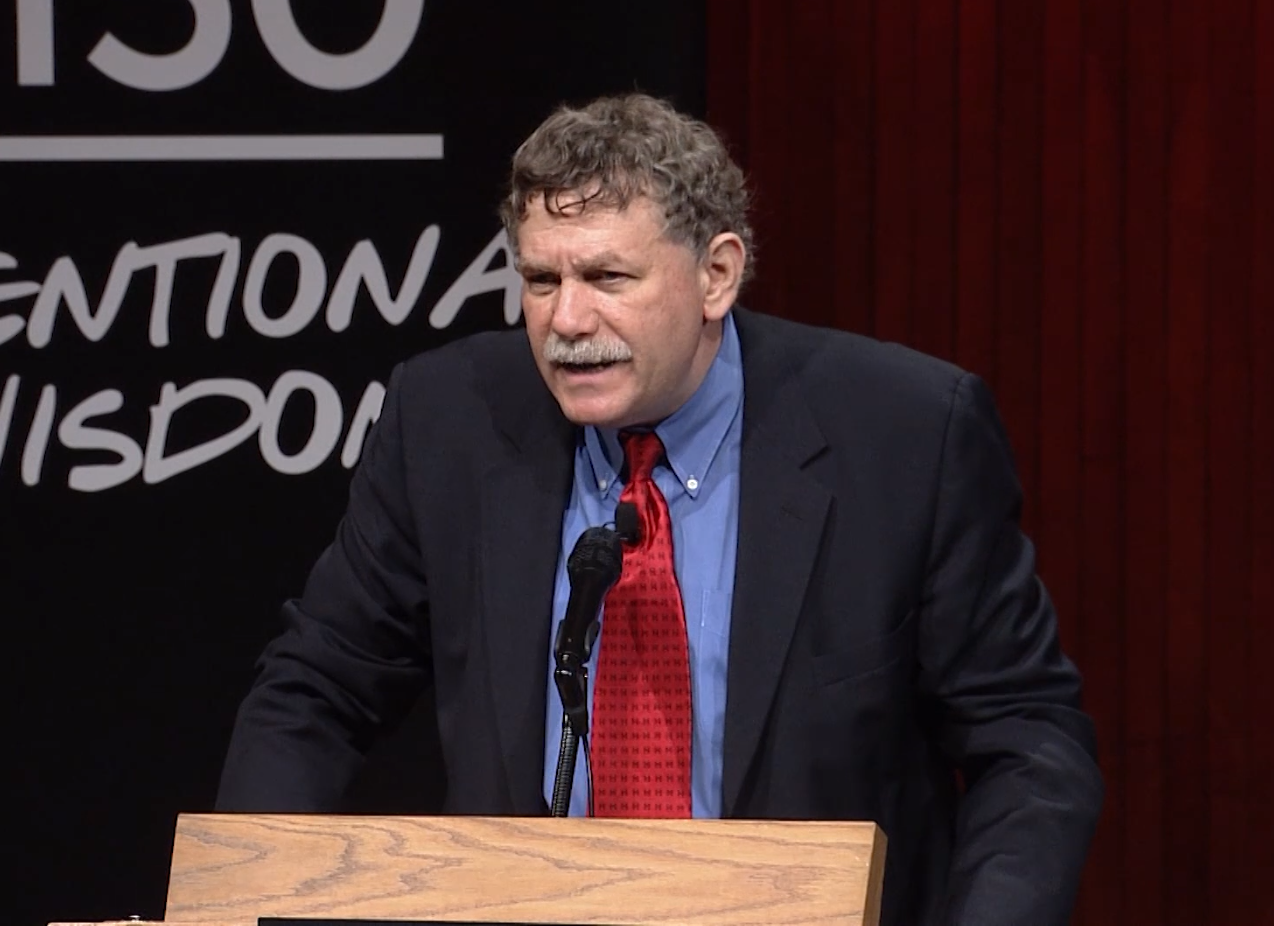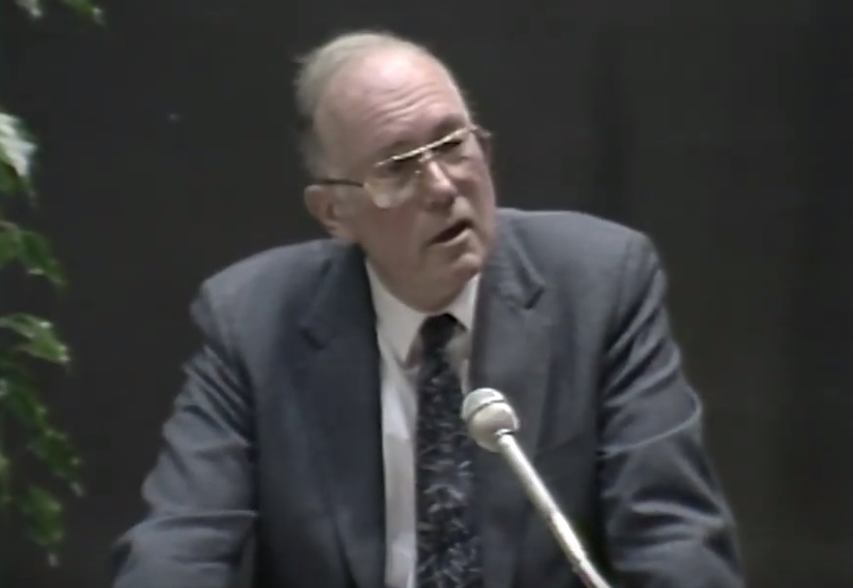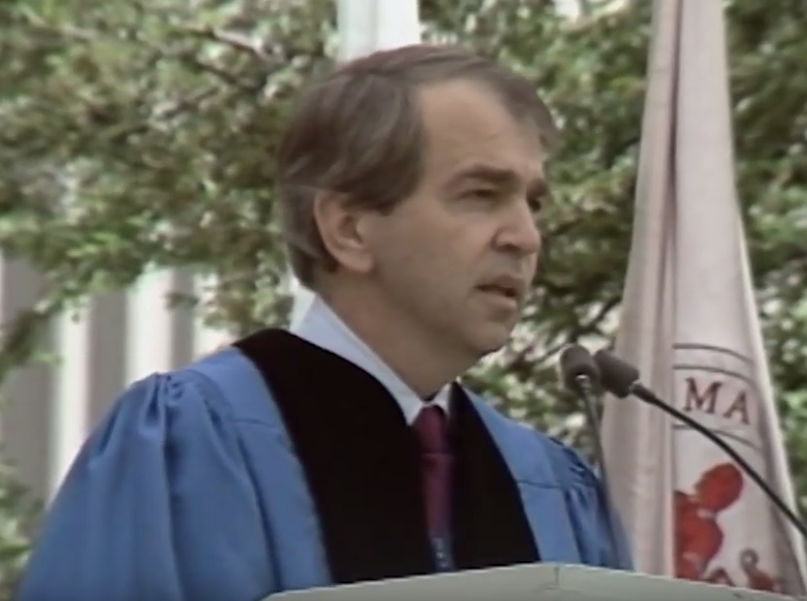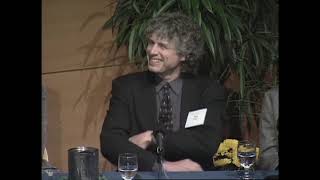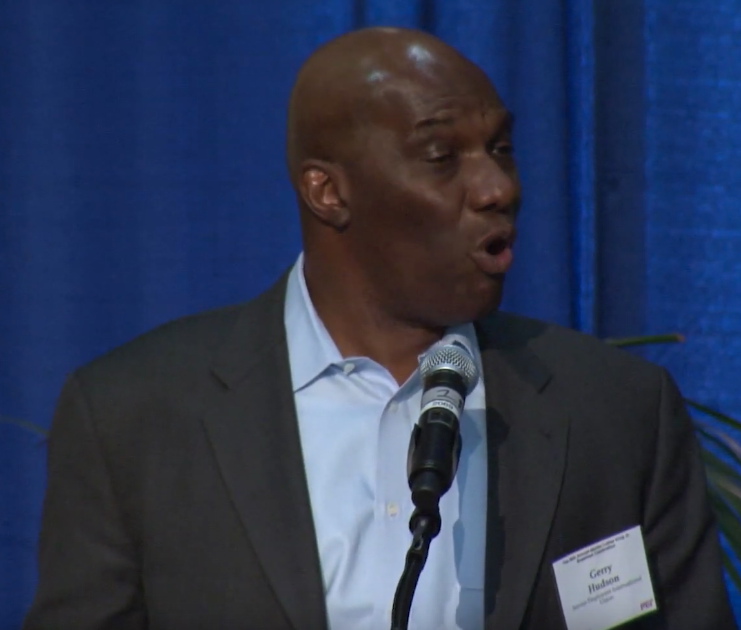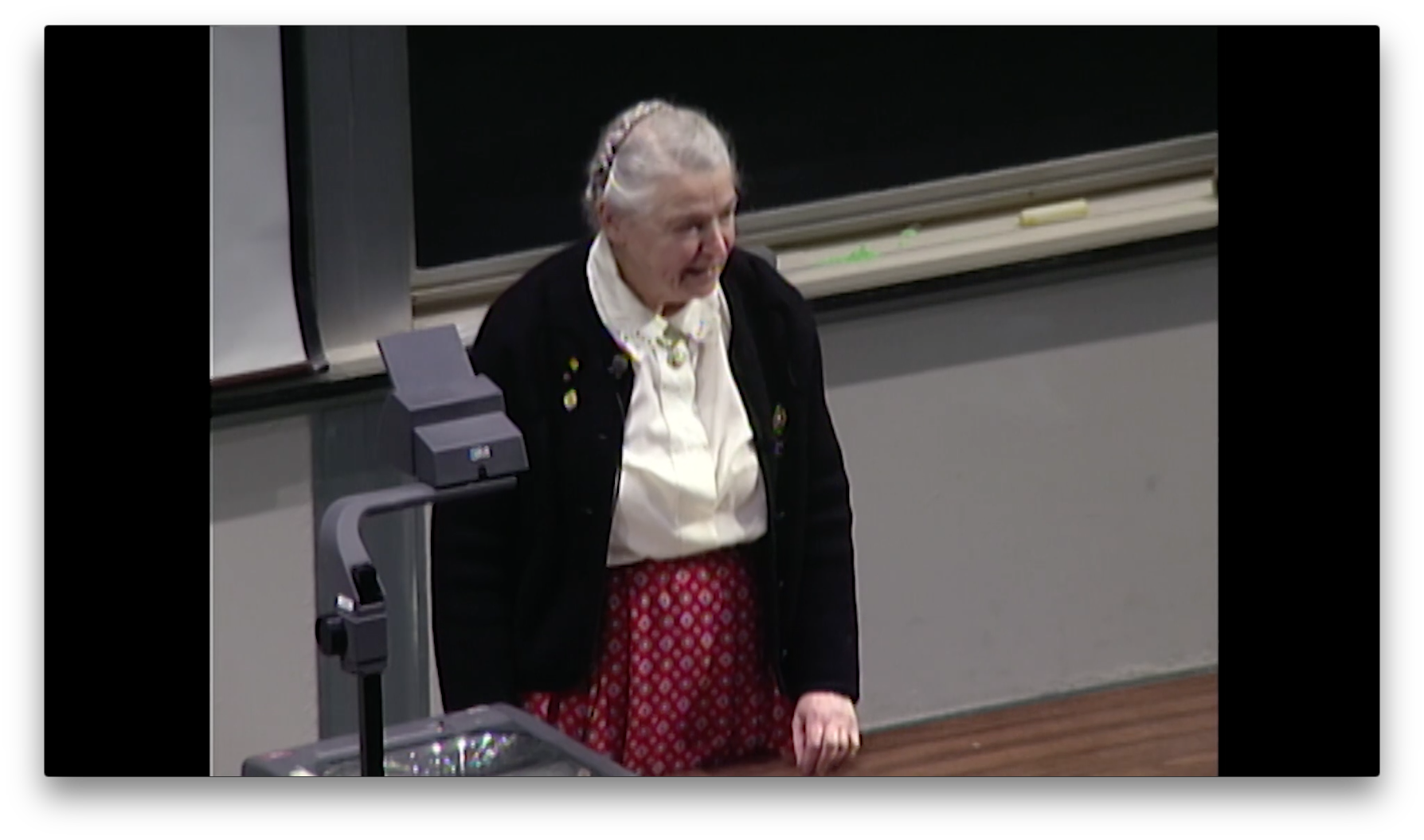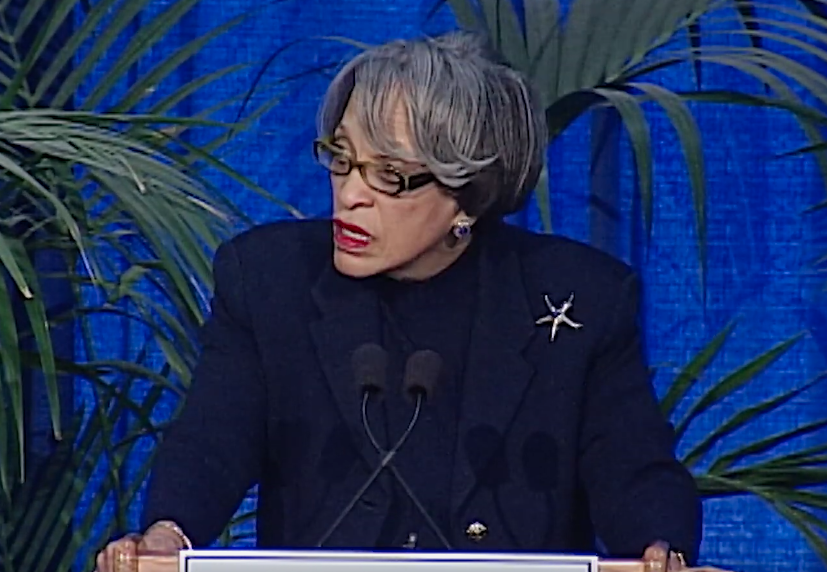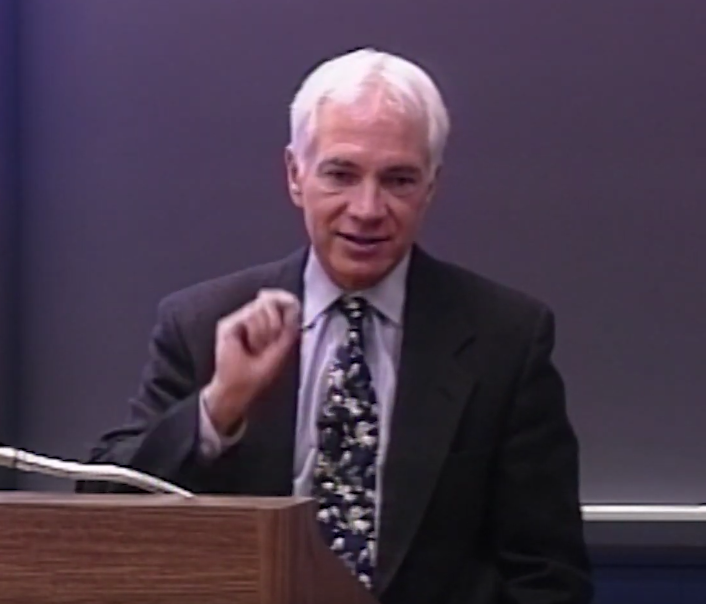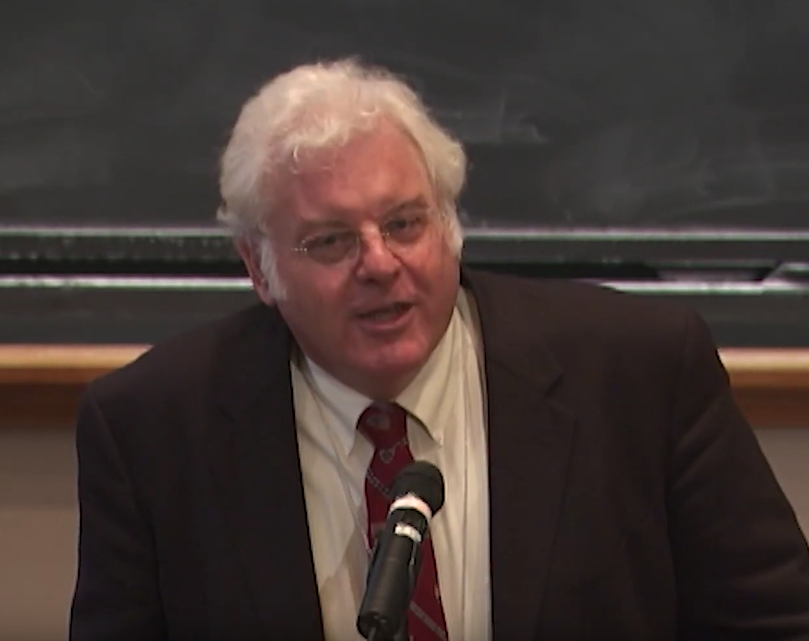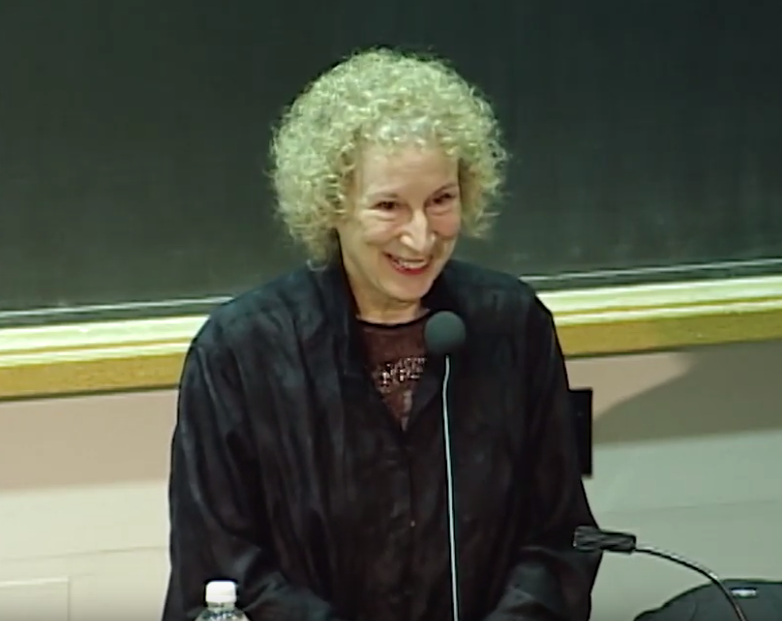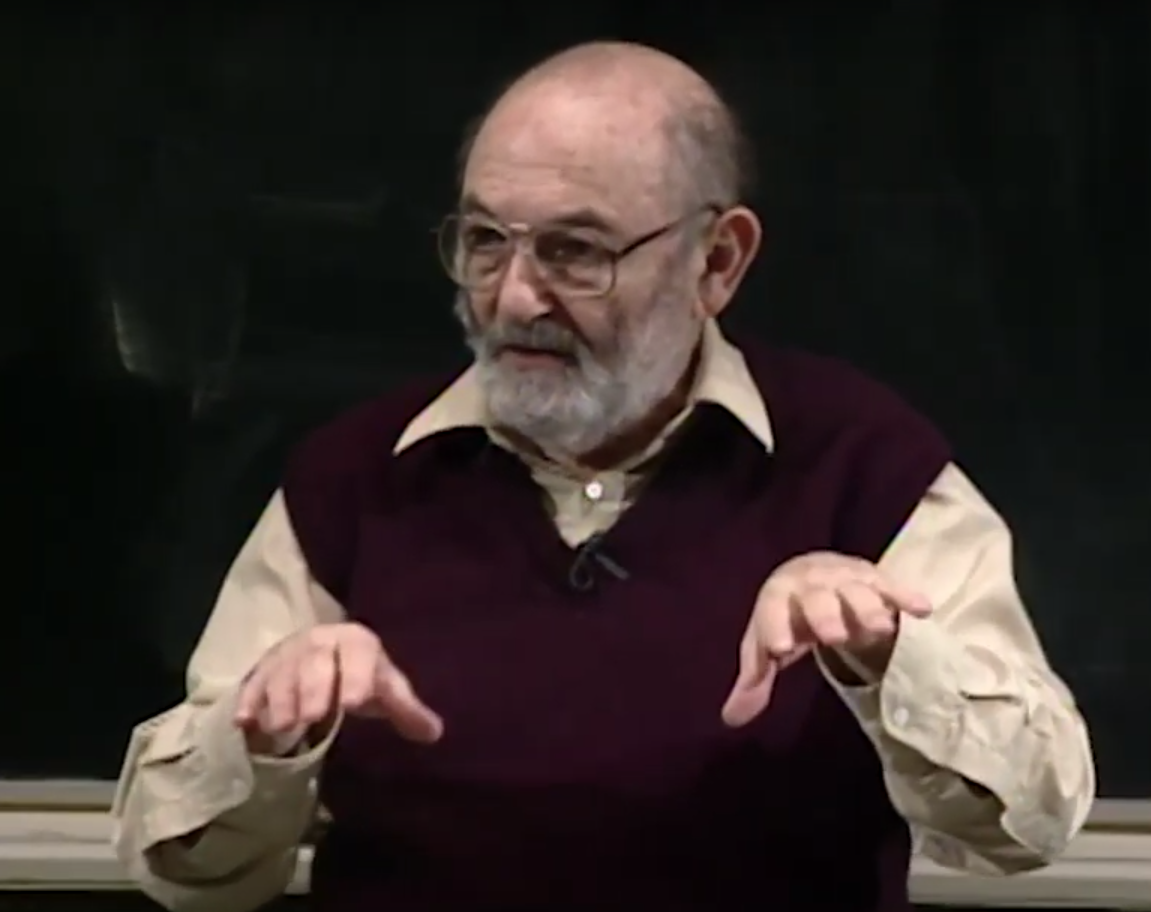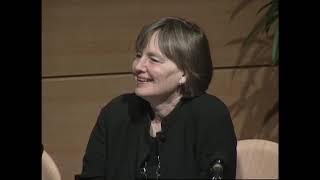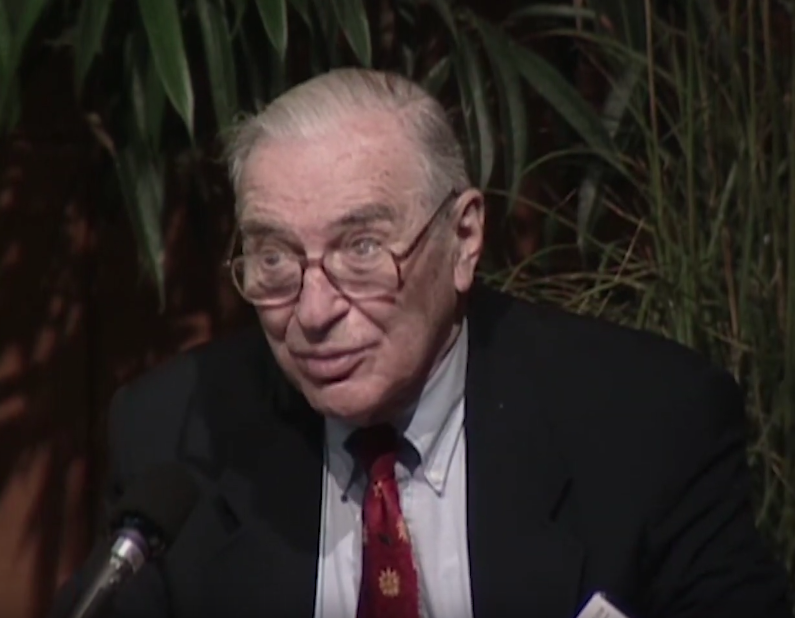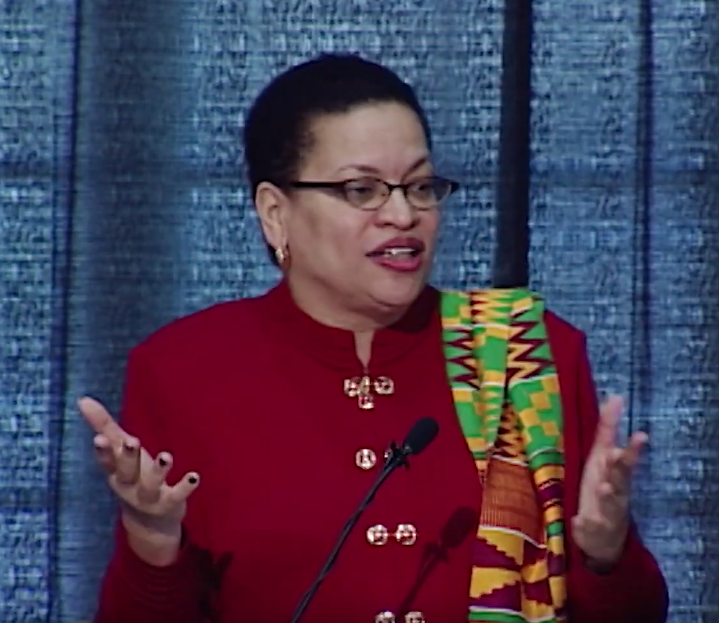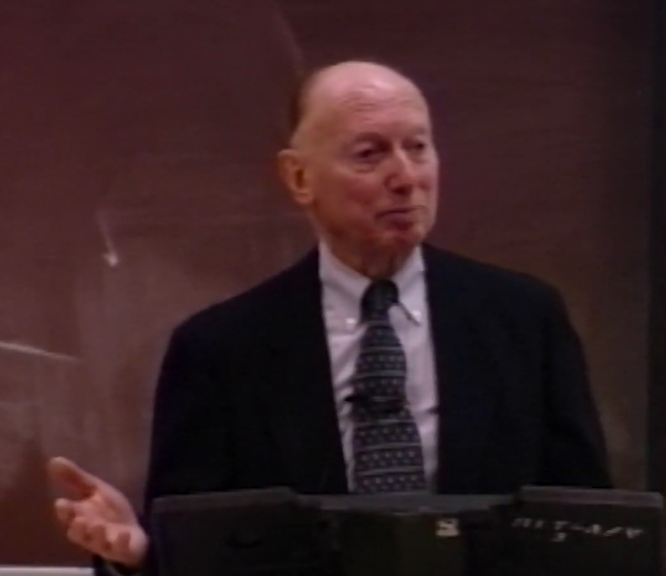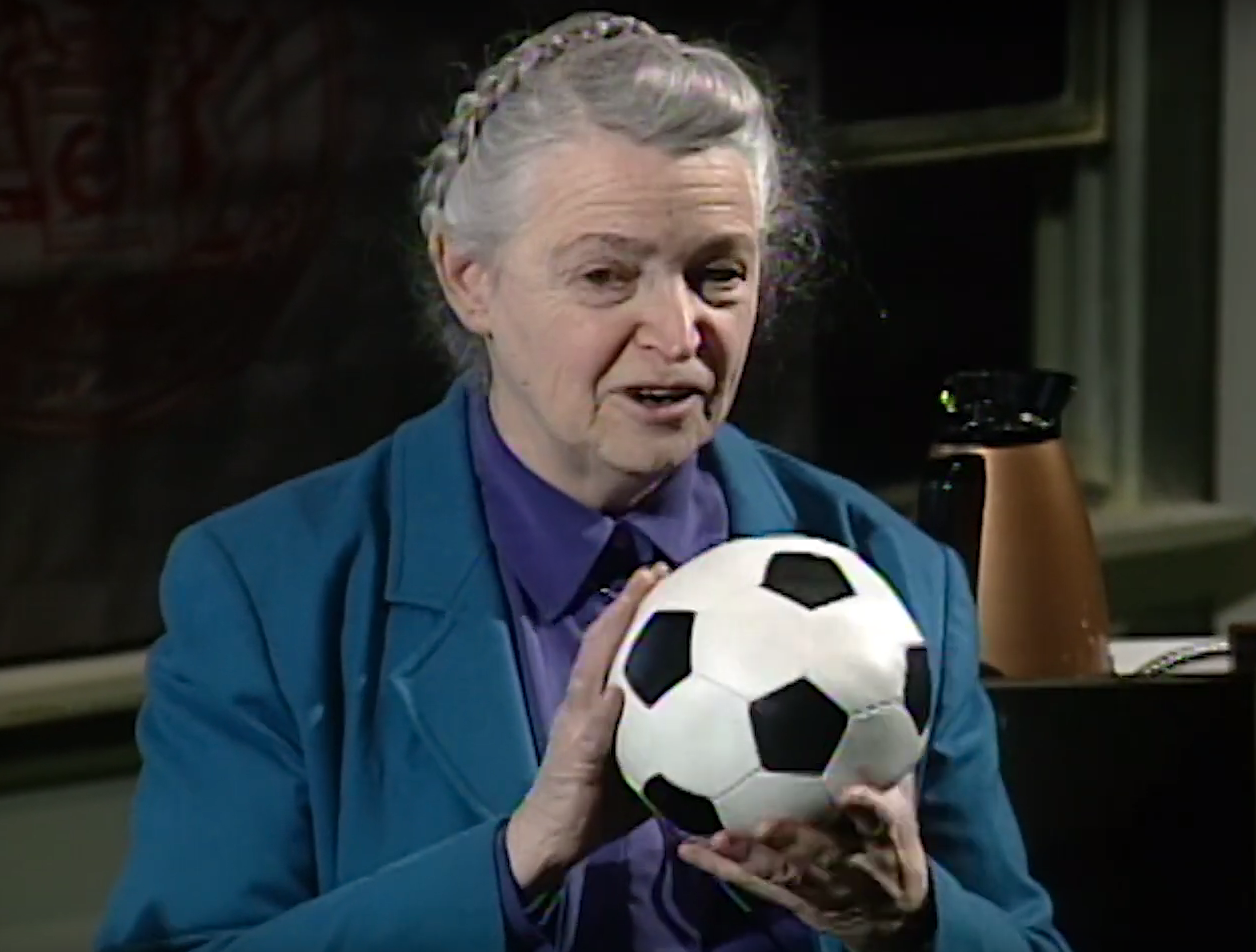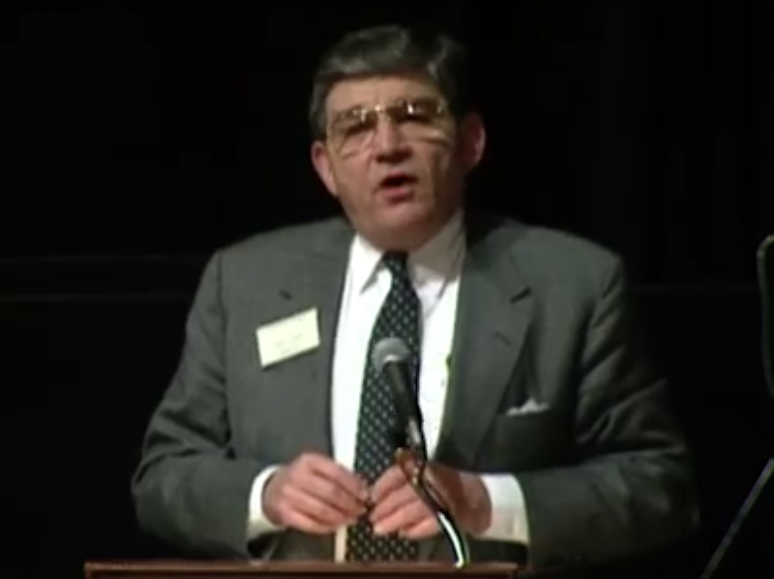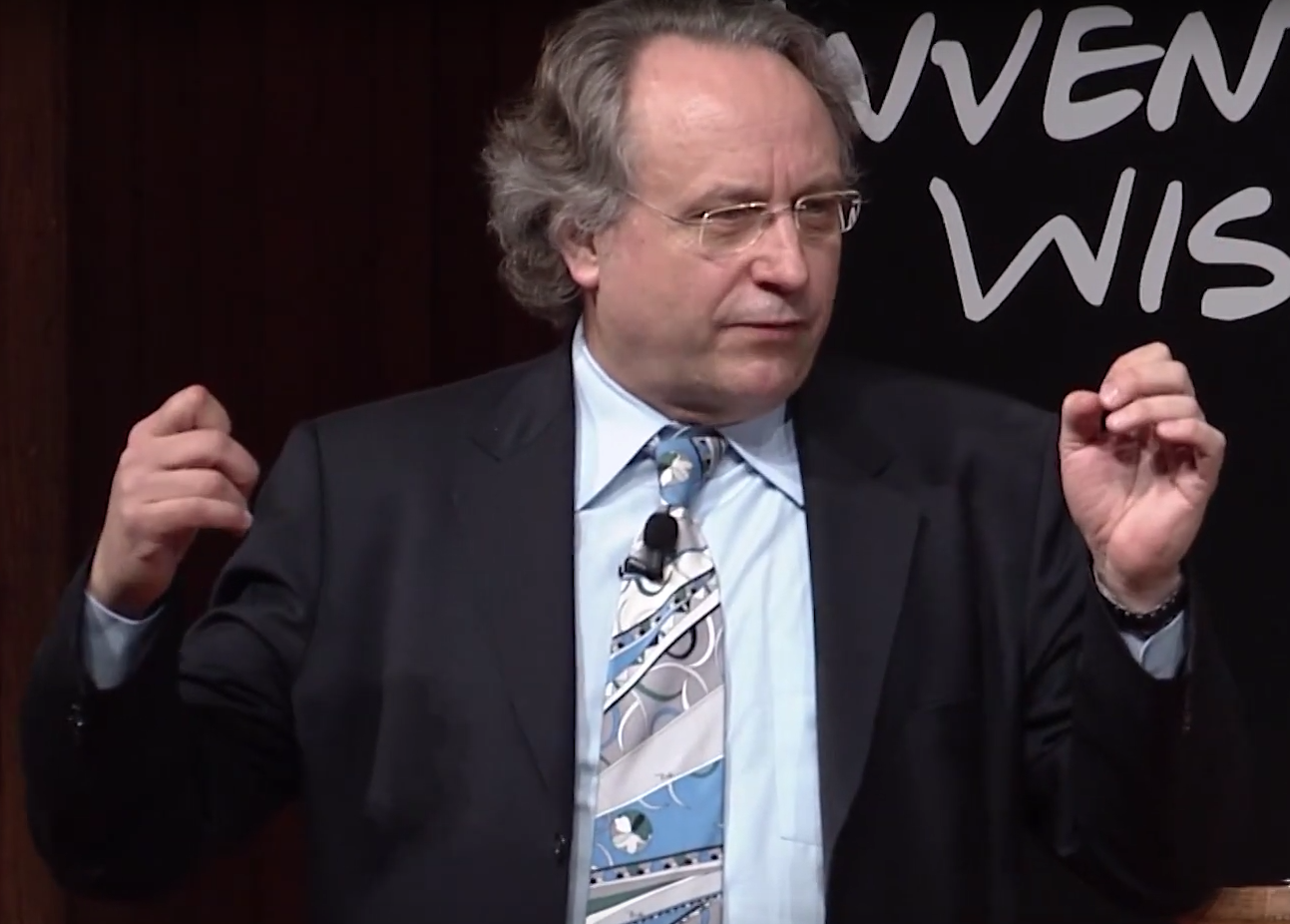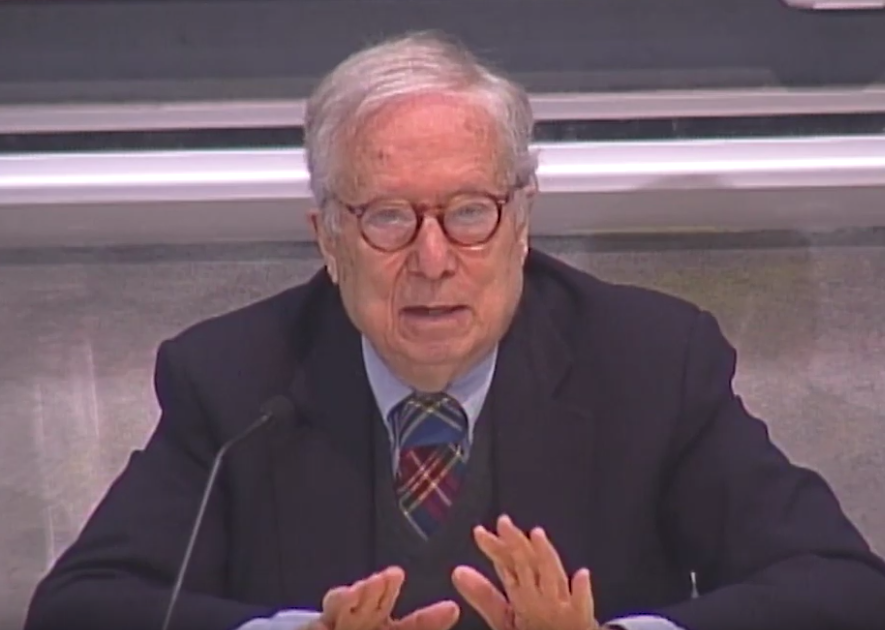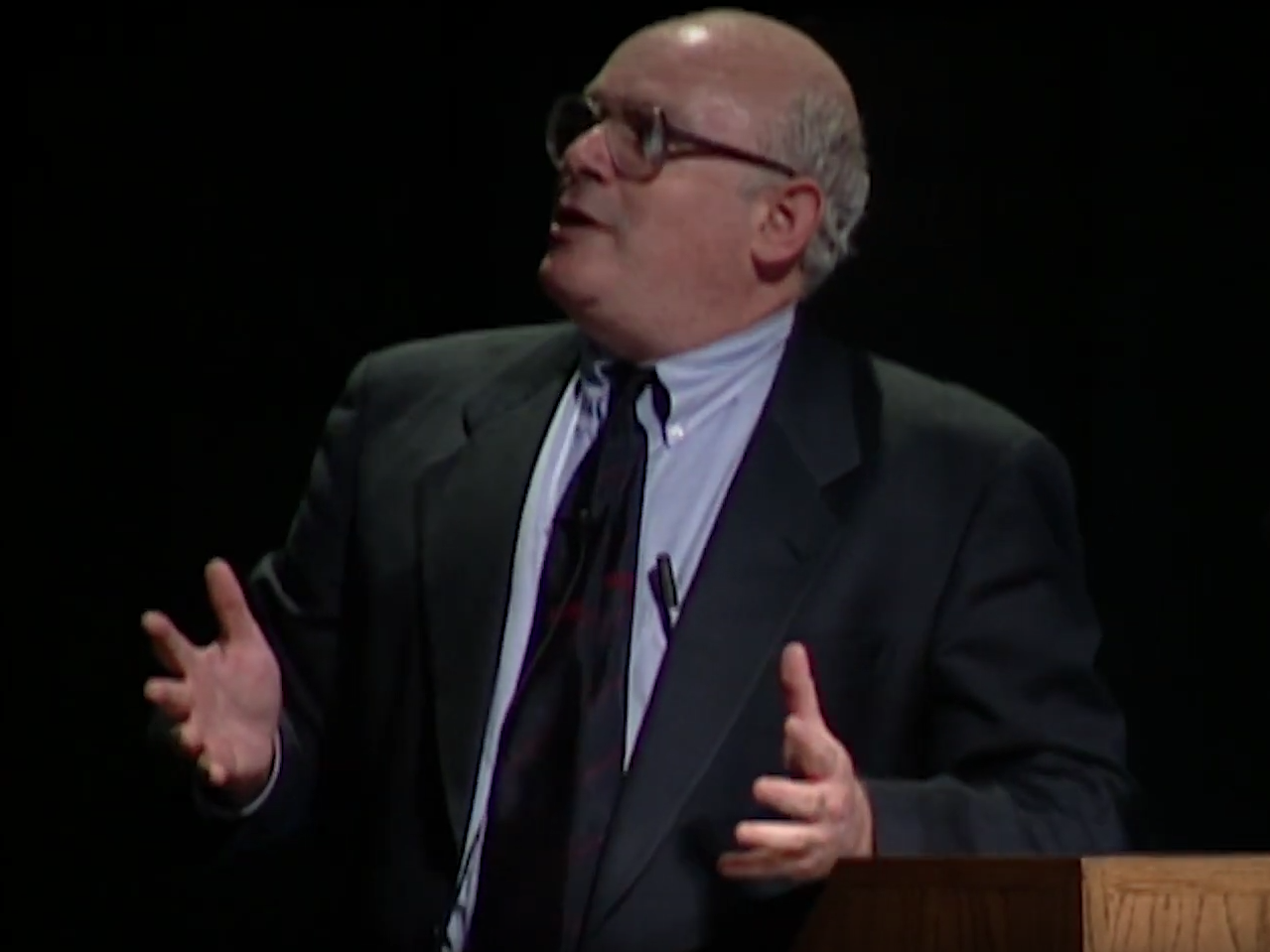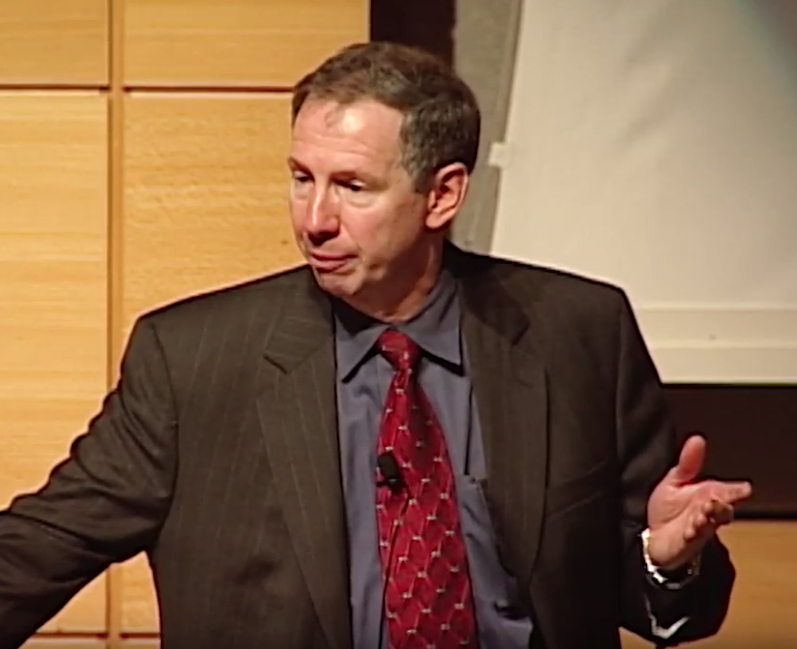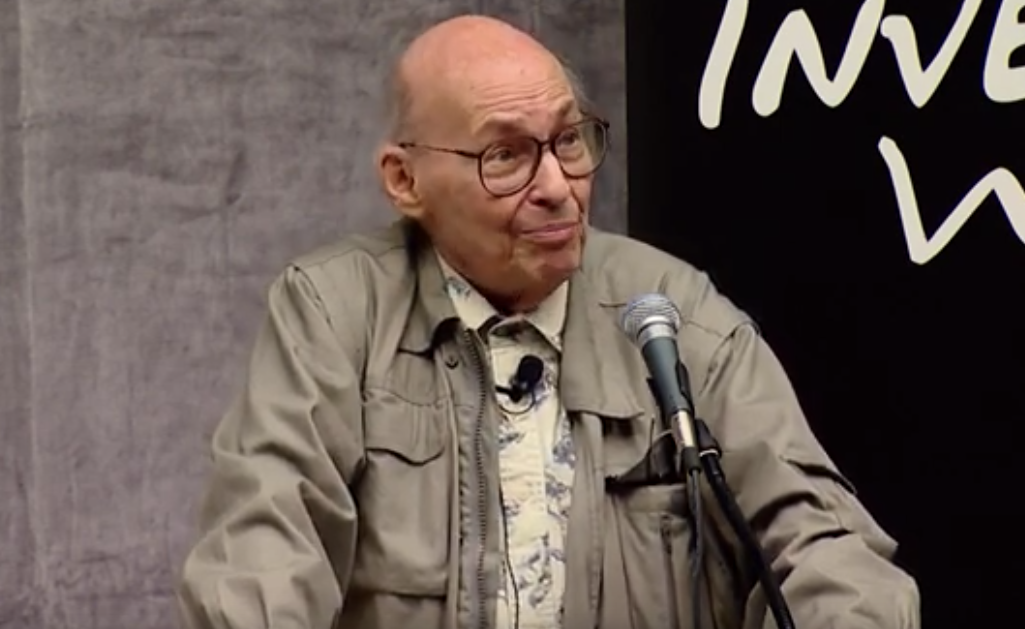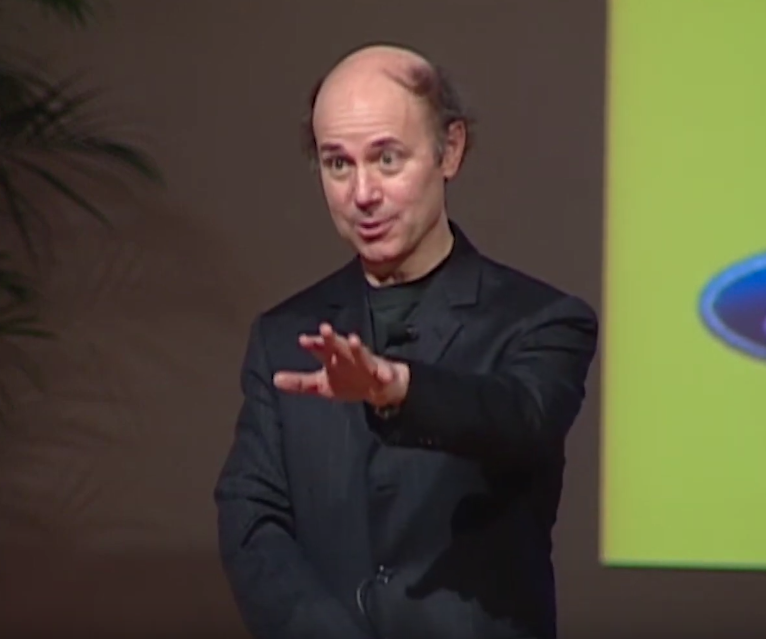Kenan Sahin, Keynote Address - Tenth Annual $50K Entrepreneurship Competition
MODERATOR: I wanted to thank you for coming, first of all. It's a great treat to be here. The main purpose of this event is to celebrate this year's entrant teams, all 150 of them, and of course, especially the seven finalist teams who are here tonight to share their plans with us.
Before I get started, I'd like to give special thanks to three groups of people. First of all, the sponsors, without whom this wouldn't be possible. And you saw a list of them at the beginning as you walked in. I'd like to highlight two recent changes to that list. The town of Haverhill has recently agreed to provide incubator services to the winning team in the competition.
And something you'll hear a little bit more about later in the evening is for the last year, we've been working on creating an endowment fund for the competition to make sure that it will be stable and growing in the future. And we'll talk a little bit more about that as the evening goes along.
The second group is the judge's, a group of about 24 people, professionals from all walks of the venture community life-- entrepreneurs, angel investors, venture capitalists, professional service providers, and others-- who put in uncounted numbers of hours reading all of those 150 entrants, and selecting among them 39 semifinalists. Those semifinalists came here, presented their full plans. And from those, seven teams were selected last week. Those seven are the teams you'll hear tonight.
Finally, helping those teams to perfect their plans and really improve the quality year over year are a large group of dedicated mentors who dedicate their time and energy and effort, providing knowledge and experience, helping the teams out. So to all three of those groups, thank you very much. We couldn't be here without you.
Just a brief description about how we got to this evening. It's a complicated and winding road. We start in the fall, in September. We had a great kickoff speaker, Ann Winblad, talking about software entrepreneurship. About a month later, we had the 1K entries. We had 84 business ideas submitted for consideration.
In December, we had the awards ceremony where we picked 10 winners ranging from internet to biotech hardware to medical devices. Over the IAP, the 50K organizing team went to Singapore where we hosted a workshop called the Global Startup Workshop. We had about 140 participants from four continents come to hear about how to run a competition such as this and how it fits in with the larger entrepreneurial community.
A couple of professors helped us out in that endeavor. Ed Steinfeld flew to Singapore with us and gave a great speech. And Lester Thoreau spoke by video conference.
In the spring, we had Mitch [? Kapoor ?] come and give a great talk, exhibiting his own desire to see one of the entrance teams in action, the micro engine team, creating the miniature jet engines that power your laptop computer. And we'd like to see that one, too.
In February, of course, we started the process all over again with 150 executive summaries coming in for consideration. Those were cut down to 39 by the judges, the 39 most promising candidates. Alex Laats, a recent MIT grad from about 10 years ago, founder of NBX Corporation, spoke about his experience with entrepreneurship.
And those teams then went forward and spent the next month and a half writing plans perfecting them, bringing us to where we are today. We'll hear from all those teams. And we'll hear who the winners will be.
This is a completely student run organization. Every year, we have a management turnover. It's a great challenge and a great opportunity to bring in new fresh blood to the organization. And we have a great team identified for next year. I'd like for them to all stand up if possible so you can see their faces and know who you'll be working with next year.
[APPLAUSE]
We often like to talk about the successes of our alumni and in particular the fact that, although it may seem like a cliche, everyone who enters is a winner. As you saw, over 42 companies have been founded. In 10 years we've only had, obviously, 10 winners, maybe 11 if you think about last year. But there have been plenty of other teams that were not winners in the competition but that had the commitment, the spirit, the drive, and the talent to go forward and create successful enterprises nonetheless.
So I'd like to just talk a little bit about each of these. Volunteer Solutions, one of last year's co-winners, has just recently launched their volunteer database matching site in Austin, Boston, Detroit, Los Angeles, and Silicon Valley. Direct Hit Technologies has closed their second round of funding. And they have partnership deals with Lycos, Hotbot, AOL, Apple, Microsoft, and others, all in the last 10 months.
Akamai Technologies has built a worldwide content distribution network and are currently working with some of the top 10 content sites on the internet. They were finalists last year, but not one of the winners. And a semifinalist last year, Frictionless Commerce, has also recently closed funding and been profiled in Boston Magazine. Finally, from a previous year, Virtual Ink has just launched their product, the Mimeo, electronic whiteboard enhancement.
So I'd like to thank all these teams for having the spirit to go forward and really create companies, not just business plans. And that's really what this competition is all about. And as you saw in the presentation at the beginning, we've had over 40 companies and created over $500 million in value, reflecting the fact that we're here to create companies not business plans.
So with all that said, I'd like to introduce our keynote speaker for the evening, Dr. Kenan Sahin. Dr. Sahin has a successful record in academia, business, and technology. He's recently named the Ernst & Young Software Technology Entrepreneur of the Year. He was a Sloan professor and as a PhD from MIT as well.
His company was recently acquired by Lucent Technologies. And he's remaining on as president of that division. With that said, I'd like to introduce Dr. Kenan Sahin.
[APPLAUSE]
SAHIN: It's a truly great honor and pleasure to be here, a place where I spent a lifetime. I came here in 1961, fully intending to leave MIT to go elsewhere, fully intending to leave Boston to go elsewhere. I tried. I made the many attempts of escape. Never worked. And I'm, of course, absolutely delighted.
And today, it means a great deal to me to be addressing you for many reasons. One of my most cherished papers as an undergraduate was entrepreneurship. And at the time, I had to struggle to learn the spelling of the word and teach it to others. Because people did not know what this thing was. Well, that changed. Now it's on everybody's lips.
One of the questions that might be in your minds, so I'll anticipate it, how does it feel to be worth $1 billion and a half.
[APPLAUSE]
My answer to that is I really wouldn't know. And I genuinely mean it. Because I really do not consider myself as owning it, simply as a custodian for it.
Let me elaborate. There is an old saying. A man is asked, are you honest? And he says, I don't know. My honesty has never been tried. And I always said, money doesn't motivate me. It is what money can do that shapes my life. And one day, if you're interested, I'll tell you a whole lot on how that notion was applied to Kenan Systems.
At any rate, I was tested, actually tested on that principle. So I can confidently say, I was true to my words. In February 1998, I got a call from Lucent. They wanted to meet. And I said, if this is about the investments, please don't even bother coming. We're very happy to be independent in charting our course. They insisted on coming, claiming that there were many joint opportunities. And when they asked a group president for a private meeting, I knew what it was all about. It was February.
And he said, Kenan, we've done our search. Everybody on the Wall Street is recommending this company. And I thought Wall Street didn't know about us. And my answer was an immediate no. Very privileged, very honored that you thought of us, but the answer is no.
And I must say, he was startled. Because we both knew more than $1 billion was on the table. And here was a man who owned 100% of the company. And he had no hesitation in saying no. And it was a test of my own self that it wasn't the money, what the money could do. And at that time, me being rich did not have any meaning for the company.
And I've always held that a person doesn't own a company because company is people. And a person owns a financial interest in the company. The fact that I had 100% did not make me owner of the people, merely an employee who had a lot of impact on the company. But I could have been an employee without ownership. President of the company, I still could have had a lot of impact.
But what changed was five months later, inside of one week, I had a meeting with the key executives of British Telecom, Telefonica, and France Telecom. And they all informed me that our products had been chosen as the corporate-wide technologies. I must say while I was hearing the meetings, I was 10 feet tall. As soon as I left these meetings, I shrank to 5 feet tall.
It's an onerous responsibility to have AT&T, MCI WorldCom, Quest, Level Three, France Telecom, British Telecom, Telefonica-- I can go on and on and on-- as your clients and have a personal relationship with their executives and know that your mistakes will immediately impact them and know that your accomplishments will immediately contribute to their success. And that's when the Lucent offer all of a sudden made sense. I said, now there's a reason for the merger. And Lucent considered it a merger.
Now JP Morgan was the investment bankers. And their chairman personally took the case. He was really intrigued. He said Kenan, this is an amazing company. 100% growth year after year. 50% margin. No stock options. Just a straight pay. Exceptional hiring record. How did this happen?
I said, I don't know. If you ask me, I probably come up with a story. But I myself don't know. But JP, after doing their multiple analysis and so on, came up with $3 billion for the company as the market value. If you took Lucent's multiple and multiplied it by our forward 12-month income, they think that's what it would have been.
And my response to them was, thank you. I appreciate your advice. But you're not coming to the negotiation table. Thank you. I'll do it alone. And it was a big surprise. Because it was the head of M&A that personally said, I'd be happy to call [INAUDIBLE] again. I'll be happy to call the executives at Lucent. After all, we know these guys very well. I will get you a good deal.
But I said, you don't understand. This is not about money. This is about what we, Kenan Systems and Lucent, can do together. So four months were spent negotiating the intangibles. Kenan Systems remaining a wholly owned subsidiary and us having a mindshare of Lucent. It was bold. It was audacious.
During the announcement, I told the staff, I said there are two objectives behind the merger. One is to make a huge impact on the software market. Two is to transform Lucent. And I'm very pleased to say those seemed almost corny. How could the 750 person company, no matter how many Sloan graduates there are, say we're going to transform a 136,000 company, which has a history of more than 100 years?
But I have to tell you, we have already traveled fast down that path. Rich McGinn was in town last year, yesterday. He talked our jargon. He talked our vocabulary. He talked of Kenan Systems models. And I asked him, I said, Rich, what did you think of this before the merger and after the merger.
He said, Kenan, before the merger, it was getting the technology. And during the due diligence, we discovered we had much, much more than that. And now we're delighted. It is the models. It is the business practices. And it's how you guys have done it. And I want Lucent to learn from that and emulate it.
I can't tell you how happy our people are. Now they are standing 10 feet tall. How about me, personally? Well, I genuinely mean it when I say I merely consider myself a custodian of that wealth to be applied to very productive, useful purposes.
My real excitement is my role inside Lucent. I have two roles. One is to continue as the president of Kenan Systems, which I cherish, especially interactions with all the wonderful people both from Sloan, rest of MIT, and Harvard and Princeton and Yale. You name it, we've hired them.
But much more importantly, as Vice President of Software Technology at Bell Labs, when that was told to me that I would be Vice President of Software Technology, I didn't pay much attention to it. Because, I've done a lot of work for the financial institutions. When you go to a bank, everyone's a Vice President. You wonder how these Vice Presidents get together and have a meeting with the President. So I didn't pay much attention.
But it turns out Bell Labs, which has 1,200 core researchers, equivalent to academicians. They would be Professors and Assistant Professors and so on if they were in academic institutions. 5,000 core people who do fundamental work, 20,000 people spread into the businesses, all told about 25,000 people. And for all that, there are eight Vice Presidents. And I'm very thrilled, very pleased, very happy to be one of them.
Not only that, no one else covers software. And I have been given this onerous and exciting responsibility to impact Bell Labs' and Lucent's software, strategies, technologies, and so on Am I up to the task? I was scared to death once I found out. In fact, I wanted to go to Dan Stanzione who is the President of Bell Labs, and say, Dan, can I serve in this job for one week and then resign. So I can tell my kids, I worked at Bell Labs. You don't even have to pay me for that week.
But I did not lose my nerve. And I've already had been interactions, by golly, they are really listening to us. We're already absorbing a great deal of technology, software technology. And one of my additional missions is to act as a link between research universities and Bell Labs. We've already started that. We had a wonderful meeting with Bob Brown. Tom Magnante was my former colleague. He's the Dean of Engineering now. [INAUDIBLE] and so on.
We're moving next to Harvard. It just so happens Harvey Feinberg, who is the new Provost, was a dear colleague of mine when I was teaching at Harvard. And we'll move to Stanford. We'll move to Berkeley. And we will bring some of the best ideas into Bell Labs as an engine of innovation.
And my message to Lucent was, don't think are R&D. I criticized their logo. And they took offense. Marketing people get very sensitive about logos. I said, this is an O. You go round and round and round and round. I said, that describes research and development. But I said, we're here to add a second D, to take you from research, development, and delivery. And when you have R, D, and D, then you have a powerhouse that's going to transform the world.
So on that note, I'm counting my minutes. Scott, where are you? You have to keep me really honest. I have a reputation of overrunning sometimes. But I have my watch. You keep me honest.
I want to come to Boston. I mentioned I couldn't get out of Boston. Boston in many ways shaped my life. And I think Boston in many ways has shaped the century. And I want to start with two threads. And I will try to bring them together. One is Alexander Graham Bell. The other one is Alfred P Sloan.
Alexander Graham Bell, I have an office overlooking the river. I look at the river. But I tell you. Many times I look at Back Bay, I imagine Alexander Graham Bell creating the first revolution, telecommunications revolution, which is telephone mediated. We all have benefited from it.
But the second revolution has come to communications. And that is computer mediated communication revolution. See, when I came to MIT, I was just like anyone else, enamored with computers. And I thought I was in the hub of the computer revolution. Only later on I realized that, no, we don't have a computer revolution. We have a computer mediated communication revolution.
Why? Because it's that computer mediated communication networks that have turned into knowledge storing networks. And I take pride. Dr. Bob [? Rines ?] is in the audience. He remembers me, 1969, going to him with an idea, how to connect millions of computers together without a central switch. And I was almost laughed out of Sloan for that.
Because in 1969, there were going to be five, six computing centers. And we were going to timeshare. My proposal was, let's connect millions of computers together. And I got patents all over the world which I did nothing with.
But I'm very happy that the vision of 1969 has evolved into the knowledge storing networks of the 1990s. I even went to [INAUDIBLE]. Bob, again, will remember. He took me to [INAUDIBLE]. They said, Kenan, we don't have any use for ideas that connect many, many computers together. We're just trying to connect 10 computers together. And now [INAUDIBLE], of course, claims to have-- anyway. I won't get into that.
But what Alexander Graham Bell spawned, he probably didn't know it, was Bell Labs. And that engine, I'm now finding out, really shaped the century. Each time I go there and visit the shrine of Bell Labs, I am surprised to find out that the fax machine was invented at Bell Labs 1925. 1925. Microphone was invented there. Transistor, of course, we all know was invented there. And it looks like our lives were shaped by what happened at Bell Labs.
But now we come to the second revolution. And I'll come into Sloan and connect two. To me, Bell Labs represents innovation engineering. I think they have mastered the art of injecting engineering into innovation and taking it from a whimsical idea into something that is cogent, that is dependable, that can do something.
Now Sloan, why do I talk about Sloan? I came to Sloan School in 1961 as an unsuspecting undergraduate. And I was thoroughly disappointed. I would take a course at electrical engineering and marvel at the cogency, the delivery, magnetism. And I'd come back to School of Industrial Management, this was before Sloan, there was mass confusion. Courses were incoherent. We would be given notes with spelling errors, mathematical errors. We'd have to raise our hand and correct the instructor. I was very disappointed.
What I didn't know was I was witnessing a revolution, a true revolution. And I verified it later on. Most of you probably don't know that Harvard followed and still follows the elitist model. You bring very bright students with very bright teachers together and you make teaching happen.
MIT, I understood from Howard Johnson and others that I talked to later on, said, we cannot teach management because management is a set of values. But we can teach management technology. And what was happening at MIT in the early '60s was pulling management technology together. That's why these guys were confused. Because they were writing it as they were thinking it. And we poor students were trying to correct them.
And it was MIT, among others, that packaged the business education. And it became imminently exportable. I remember in 1960s, our friends in engineering used to call us money engineers. But what they didn't realize, what the world didn't realize, was MIT was inventing business and organizational engineering.
By golly, when those two things come together, innovation engineering and business and organizational engineering, it's an explosive idea. It's no wonder that we exploded the business school population in the '70s. MBA became the golden education. And many places on this Earth could take advantage of it, thanks to MIT. And thanks to Stanford and Harvard and so on.
But MIT, I think saw the path. Engineer the business process. Engineer the organization. When people talk of MBAs, I say, no, we don't hiring MBAs. We hire organizational engineers. That's why I think the American business was fundamentally transformed. Because in the late '70s, we'd already jumped 100,000 MBAs coming out to change, and so on.
Now I feel truly privileged, truly rewarded because I had the joy of being a professor for 17 years, starting in 1967 as an instructor thrown into the paws of Sloan Fellows. Tom Hill told me, do you want to teach Sloan Fellows, Kenan? I said, sure, Tom. Tell me what to teach and I'll do my very best.
I walked into this classroom. I was 26 years old, working on my doctoral dissertation, thin as a needle. And I walked in and no one would pay any attention to me. I looked at these guys. It was a bunch of old guys, really noisy too.
So I said, excuse me, the instructor is here. I could hear a pin drop. They thought, of course, I was the TA who had come to erase the board. Well, I learned a great deal from the students. And I immediately declared myself a student of the subject, never the professor.
At any rate, I think I have been either rewarded or punished. Because after 17 years, I was thrust, forced into practicing what I was trying to teach. I can't tell you how exciting it is to discover how many mistaken thoughts you've taught in the classroom. I felt like sending out recall cards. Will you please, class of 1972, come back? Can I revise that opinion?
And not only that, but 1984, we recruited as a small company six MBAs from Sloan, organizational engineers. And my reward or punishment was to practice business with some of my very students. And it's an eye opener. It really is an eye opener.
And we grew the company to about 800 when the merger with Lucent happened. Now I look forward, and I believe I have my true career ahead. All of this was preparation. All of this was really practice. I feel like a doctor. You ask them, you say, what do you do? They say, I practice medicine. Well, you say, when are you really going to learn it? Should I really trust you if you're just practicing it, and so on.
And I feel, in a genuine sense, here I am, 58 years old, and every year I have been practicing for what is ahead, which is to bring innovation engineering, as is the case at Bell Labs, together with organizational and business engineering, to push ahead and be a change factor inside Lucent and help transform Lucent into the software company of the next decade.
And for me, that's what entrepreneurship is all about. When I was asked many times what is entrepreneurship, I never viewed it as making money. But I viewed it as creating value for others. I never viewed it as competing with that guy out there, kill him so that you can capture the market.
I think that's a war analogy. That's a sports analogy. A much better analogy for entrepreneurship is the nurturing, creation, giving birth to something that others had not been able to yet or haven't got around to, and really expanding the pie for everyone to take part in.
How am I doing? Do I have two to three more minutes to take some questions? So that's why I really feel truly honored, privileged, I feel like a kid. I wish someone in my 20s had told me that at age 58, I would be just as energetic, as enthusiastic as I was at 28. I wouldn't have rushed so much. I would have taken some time and enjoyed the wonderful halls of MIT and absorbed much more knowledge. I would have become much more of a student.
So I will tell you, young entrepreneurs, the spirit of entrepreneurship, which is the ability and the opportunity to expand the value [INAUDIBLE] just doesn't seem to end, just doesn't seem to end. So don't rush. Take your time. Cherish it and enjoy it.
Let me stop and see if you have one or two questions. I promised Scott that I would end on time even with questions. Yes, please?
AUDIENCE: Who has been your mentors?
SAHIN: Oh, I've had many mentors. I've had many mentors. During the recent years, my most important mentor was Howard Jones. He was my Dean. And then of course, he became the president of MIT. After we had given him a go away gift, he came back on the way to Cincinnati. And the dorm, I think, was painted orange. Because people thought Howard Johnson, Howard Johnson, they made a confusion.
And when the company really got going in '86, '85, having observed the presidents of many small companies and having concluded that presidents of small companies are very dangerous people, they can cause a lot of hurt to a lot of people, I was determined I wouldn't do that.
So I turned to Howard Johnson. I said, Howard, would you please come and join the board? Because you can tell me to go to hell. If you do, I really will try to find a path to hell. And he'd be wonderful. And he said, I have one condition, Kenan. I will bring Jerry Wiesner with me. Jerry Wiesner was Kennedy Science Advisor and the subsequent president. I said, Howard, if you bring Jerry, I will feel like a student.
But when I went to see Jerry Wiesner, who became a very excellent mentor, I had to stop myself because I was apologizing to Jerry Wiesner. I said, Dr. Wiesner, I promise I won't take much of your time. And Dr. Wiesner simultaneously was saying, Kenan, I have been out of technology for a long time. I don't know if I'm worthy of being a board member. And I had to bite my tongue and stop. And I was patronizing a great mentor. And he was teaching me humility. He was teaching me listening. He was a great mentor.
And I acknowledge Ed [INAUDIBLE] Ed and I go way back. Ed goes back to 1957, by the way. I'll reveal some of the secrets. But Ed has never lost the entrepreneurial spirit either. Ed and I, we were neighbors. We were colleagues. I was a student when he was a faculty member.
I can name [? Bill ?] [? Pounds. ?] I can name a whole lot of my professors. So I have been very fortunate to have a lot of mentors. But the most unexpected mentors were the students. I can't tell you how much I learned from the students.
And in the company, I still go to them and ask their coaching. And I've converted that to the following philosophy, that the most fundamental role of a manager is to make other people succeed, not ask them to make him succeed. But if you look at many places, people say, these are my direct reports. And these are your objectives. This how you're going to make me succeed.
When you try to make others succeed, it's amazing how much you succeed, too. Anyway, that's a long answer to a short question. Yes, please?
AUDIENCE: [INAUDIBLE]
SAHIN: Well, they actually did get it, interesting enough. Because as part of this arrangement, which was very exciting negotiations in this and that, everybody got Lucent options. In fact, some of the key people got enough options that they will be better off than if we had gone public. And I'm very happy about that.
But way back when, when people were coming to us and our recruiting record has been excellent, I was very honest, very open with them. I said, you will not get any equity here for a very simple reason. We're not in this business to make money but to apply the money we make to make a difference. If that's what you want, this is the company.
If you want to make money, here's how you can make money. We'll pay you above market. You take the difference and invest it in a company that most likely will make a lot of money. And I can't tell you how many people responded to that. In fact, one person came back and said, I discussed this with my wife. My wife said, that's really astute advice. Why would you want to take two chances on the same company, for your salary and also for your future salary?
Many times, companies don't give equity and on top of that pay above market. The reality is one expects the market to make up the difference. That's a good model. I'm not knocking it down. But the alternative model also works. Because there are plenty of people who want to get a good pay, take a portion of it and invest, and work to make a difference rather than to make a lot of money.
It's a different model. So that's how I responded. And a lot of people responded to that. Any other? Thank you very much.
[APPLAUSE]
MODERATOR: Well, I'd like to thank Dr. Sahin. For 10 years we've been talking about the philosophy of the 50K as bringing together engineering, science, and management to create great results and change the world. And I don't think any of us has ever said it as well as that. So thank you very much.
[APPLAUSE]
It's people like this and all of you who really make this a great job that I've had for a year. And this is the moment where I turn that job over to next year's lead organizer, Heather Wilding, who will come up and take over the rest of the presentation for tonight. So please join me in welcoming her and wishing her best of luck for the next year.
[APPLAUSE]
WILDING: We have now reached the part of the evening where we will hear from the seven finalist teams. The seven finalist teams are AdventureBazaar.com, Crosskate, e-dental.com, Just Enzyme, Molecular Wear, Vector Sense, and Z2 Corporation. We will proceed through the finalists' presentations in alphabetical order. And each team will receive 10 minutes. AdventureBazaar.com.
[APPLAUSE]
MORRISON: Ladies and gentlemen, wear sunscreen. If I could offer you only one tip for the future, sunscreen would be it. If I could offer you two tips for the future, invest in AdventureBazaar.com. The long term benefits of sunscreen have been proven by scientists. Whereas the long term viability of internet companies hasn't been proven by anyone.
But we feel pretty good about our idea. So who are we? My name's Chris Morrison. With me are the other founding members, Osmond Boehner, Tim Frederick, and Irene Tankel. The four of us have met here at the Sloan School of Management. We're all pursuing MBA-- I'm sorry, organizational engineering degrees.
We come from various backgrounds from consultant to design engineer to project manager to even a banker. We are bound together by a love for adventure travel. So what is AdventureBazaar.com? AdventureBazaar.com is an online travel agency that caters to adventure travelers. We operate through a community centric website. We provide [INAUDIBLE] information and one-stop shopping for our customers.
But what's the heart and soul of our company? What makes us different? Well, we're a community, not a company. Basically, all four of us have done adventure travel. Anyone you talk to who has done adventure travel is extremely enthusiastic about this. Whenever you talk to someone who's extremely into kayaking, they will keep you up all night telling you everything they know about kayaking.
We want to tap into this enthusiasm. We want to create a reliable up-to-date database. We want to use this database to harness everyone's information that they have about this to consolidate the industry. We want to provide up-to-date information and use this to aid in the planning and purchase of adventure travel.
TANKEL: Actually, there is a great market for adventure travel, especially for the adventure travel online travel agency. Currently, online travel sales constitute as much as 40% of all online e-commerce revenue. But this number is going to reach $7 billion by the end of 2001.
As for the adventure travel, it is the fastest growing segment of all the travel industry. It grows by as much as 25% per year. And over the past five years, more than 92 million Americans have taken an adventure travel vacation.
So who are these adventure travelers? Who are the main players in this market? Well, of course, adventure travelers and adventure service providers. Adventure travelers are adventuresome people who like to take active vacation. They pursue such activities as kayaking, mountain biking, whitewater rafting. And they go to the most remote corners of the world.
Currently it's extremely difficult to plan an adventure vacation. It's hard to find guides. It is difficult to make all the travel arrangements.
As for the adventure travel providers, they are scattered all around the world. And they don't have resources to reach the customers. What AdventureBazaar will do, it will bring all these players together. We will create a virtual meeting place for adventure travel providers and adventure travelers. And we will make adventure travel planning much easier.
PRESENTER: So the services we plan to offer for adventure travelers consist, as Irene pointed out, consolidation of planning. As she said, it's very difficult to plan an adventure travel vacation. It takes a lot of time and a lot of research and conventional means like guidebooks and websites and things like this. We plan to provide not only access to adventure travel services, but conventional services as well through conventional databases such as Saber.
We plan a consolidation of information through the community that Chris talked about, a consolidation of information, things like travel logs and discussion groups, a place where adventure travelers can meet and find out about new places to go and new things to do.
In addition to that kind of free form pictures and text kind of information that they can delve into, we plan to consolidate the information in a customer rating system similar to a Zagats, except for adventure travel. Where Zagat rates restaurants all around the world, we will provide the same kind of easy to use, easy to index easy to search ratings for adventure travel service providers.
Every traveler that books with us will also receive complementary travel services, for instance, a individually designed packet containing information about their specific trip, things that they need to know sometimes months in advance, things like shots that they'll need, documentation that they'll need, the political climate of the places they're visiting, emergency numbers and who to contact during their trip.
On the other side, we also offer services for adventure travel service providers. These are also customers but they're also our suppliers. They're the product that we'll be booking through the site. Like I said, booking services, we'll be offering payment collection services, advertising for them.
These are services that don't have a lot of resources, that don't have a lot of ways to reach the customer in the United States and all over the world that they need to contact. These things and others will create a constellation of business management tools for these companies to better plan and smooth their business.
PRESENTER: When it comes to earning money-- there wasn't a silence. We know how to earn money. When it comes to earning money, we'd like to follow the path of a traditional travel agency. We'd like to charge commissions on booked travels.
However, we've identified one point which can work against our strategy. And that is charging for our websites. Well, we're not going to charge. It's going to be free for any user on the web. It's going to be, everybody is going to be able to enter it.
And we've identified two main reasons for not charging. Firstly, as we've explained before, our suppliers is our customers. So they build our content. Hence, we can't discourage them to come to the site. And number two is a reason, we want to use our customers as advertisers. We believe the word of mouth will be the main promotion channel for our website.
Well, is this business going to be sustainable? That's a question. Well, on our strategy, we've identified three main core competencies. Firstly, we believe that community and the content we create will be difficult to replicate. Secondly, as a brand name, we want to promote a reliable and objective information content provider. And as a third, on the operation front, we want to build supplier relationships that will not be replicated, or if so will be very time costly and also costly to replicate.
In conclusion, I would like to say we're just another dot.com company. We have identified top five reasons why we don't fall in this category. Firstly, we are not simply a brick and mortar company that has moved its operations into the internet. We are not Amazon.com. We are not Barnes&Noble.com. We see the internet to be our central issue.
If the internet doesn't exist, we cannot bring all these fragmented players together into a virtual market. The reason number four, we aim not to have capitalization as high as Russia. As number three, we actually aim to make a profit. And we aim to make this profit without selling pornography. Yes. That's a good note. And finally, or perhaps first, we don't even have a clue how to spell IPO. So thank you.
[APPLAUSE]
WILDING: Thank you, AdventureBazaar.com. We will now hear from Crosskate.
[APPLAUSE]
PAGE: What can you do with these? You can ski in the summer at ski areas. You can carve turns just like you would on downhill skis. You can go on your favorite mountain biking trails. You can go fast downhill. And you can go uphill. Terrain is no problem.
First of all, I'd like to introduce our team. This is Sam Hartwell. Sam has two years of CEO experience at Bestman Green Systems, a bioengineering firm. And he has an MBA from Yale.
This is my brother, Matt Page. Matt helped develop the core technology of the Crosskate. And he's currently a master's candidate in product design at MIT. And this is [? Shuja ?] [? Keen. ?] Shuja has experience as a financial analyst at Morgan Stanley Dean Witter. And he's currently a bachelor's candidate at MIT Sloan School of Management.
And I'm James Page, the founder and president of Crosskate. And my relevant experiences that I started a product design company in Silicon Valley where I worked on a number of sporting goods products, including one called the free board, which is a hybrid skateboard, snowboard. And it was that experience that helped me realize the opportunity for Crosskate and helped bring it to life. At this point, we're going to tell you more about the market.
HARTWELL: The outdoor sports market is filled with examples of crossovers between summer and winter sports. For example, inline skating was really invented as a way for ice skaters to skate in the summertime. And snowboarding, a very popular sport, was conceived as a way to surf the mountains.
But there really isn't a way to downhill ski in the summertime. Where would you go if you wanted to ski in the summertime? Maybe Chile, New Zealand. Yeah, right. Maybe some of you VCs out there. What this is, this is the poor man's ticket to Chile and New Zealand. All right?
[APPLAUSE]
Next slide.
We've had over 50 users test our product. And they all loved it. The downhill skiers particularly liked it because it emulated the motion and the excitement and the challenge of downhill skiing. But we recognized that our market is made up of at least three overlapping larger markets. And like other crossover markets, we expect the growth of the market that we've targeted will outpace that of its parent markets.
Now that we've talked about the market that we're identifying, Matt's going to explain how the product works. Thank you.
PAGE: So I imagine we probably have a lot of mountain bikers and downhill skiers out there. Yes? Very good. Very good. So as Jamie was saying, the best thing about the Crosskate is that you can use it on all your favorite hiking trails and your favorite downhill skiing areas in the summertime. And you can carve turns just like downhill skiing.
You can do that through our terrific steering technology. Now, I'd also like to point out that these wheels are a lot larger than roller blades wheels, let's say. And what this helps you do is just carve these turns and take this terrain with the best of them. I mean, no holds barred. Anything goes with this stuff.
Also our skates are quite a bit longer than any of our competition. This gives us a lot more stability. You can go anywhere, do anything. These are terrific. And then lastly, we've got a mechanism that doesn't let you roll backwards. So you can actually go uphill as well as downhill and it's no problem.
Now I'll turn it back over to Jamie. He's going to tell you a little bit more about sales and operations.
PAGE: We've identified our target market as being outdoor enthusiasts. And our early adopter market is going to be the most hardcore outdoor enthusiasts. Where do they hang out? Ski areas. So our sales and marketing effort focuses around ski areas.
First of all, in order to get publicity, we're going to employ a co-marketing effort with the ski areas whereby they will promote the product, both winter and summer. In the wintertime, all the skiers are there. So they'll be seeing videos and other promotional events there. And they'll follow up in the summertime with demos and rentals so you can try them out there.
It's important to note that over 200 ski areas are open in the summertime for mountain biking already in an effort for them to try to create summer revenues. But they're still really hungry for another sport to create those revenues. We'll follow that up, that promotion, with information kits, a great video.
And then thirdly, we've identified that it's very important for people to try this product in order to create sales. And to try it, again at ski areas, people can go and try it in the summer. And then also, we'll have a rep network set up across the country so that people can try it out even when they're not at a ski area.
And then finally the good part, what everyone wants to hear, sales. The way we create sales is initially direct with some of the money going to the ski areas and then also some of the money going to the reps when sales are made through reps. And then we will transition to selective retail distribution. So that's the summary of our sales plan. And it's important to note that this is based off of a proven model that has been used by companies such as Line Skiboards, which pioneered the new sport of skiboarding.
And the next thing I'm going to tell you about is our operations model. As you can tell, we're based on a manufacturing business model. And just a couple of quick points is that we're going to start out doing manufacturing in-house so that we're quick on our toes and we stay ahead of the competition, make quick design changes. And then we will move towards outsourcing as it makes financial sense to do so.
Finally, we already have a manufacturing facility set up in the Northampton, Massachusetts area with a full machine shop. And we're ready to go.
KEEN: I'd like you guys to close your eyes and think about the time when you learned how to skate. Well, that product is no longer in the market. The new trend, or rather an intermediary trend, is rollerblading. Yes, it is an intermediary trend. Because soon, the future is crosskating.
And what will it take to bring these new cool products into the market? Well, we're asking for $1 million in two stages of funding. We project our five-year unit sales to be over 40,000, selling at $399 apiece. Our sales revenue is over $18 million by year five. Our break even point is about 5,000 units.
So this initial round of funding of $1 million, we ask for $500,000 in June of 1999. And upon completion of our milestones-- namely matching our sales projections, getting ski resorts to adopt our product, and acquiring new clients-- we'd ask for another round of funding in July of 2000.
Well, if you can't afford to go skiing during the summer in Chile, you'd buy Crosskates. If you're afraid of rollerblading and being run over by a car, like me, you'd buy Crosskates. And if you want the latest thrill in downhill skiing, you'd buy Crosskates.
With that, I'd like to conclude my presentation today. And just to let you know, we will have the Crosskates available after the ceremonies tonight so that you can try them on. Thank you.
[APPLAUSE]
